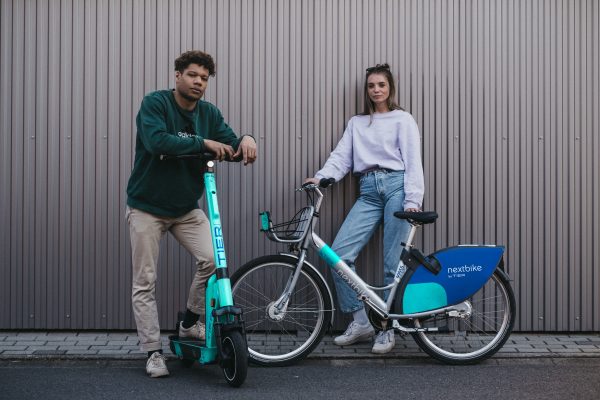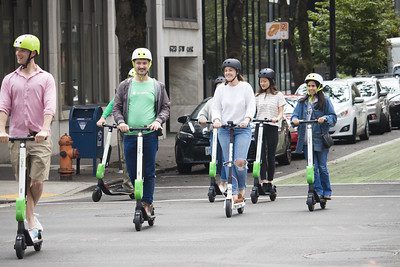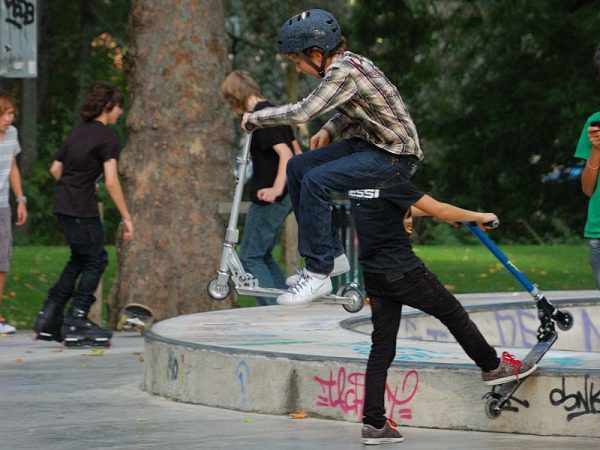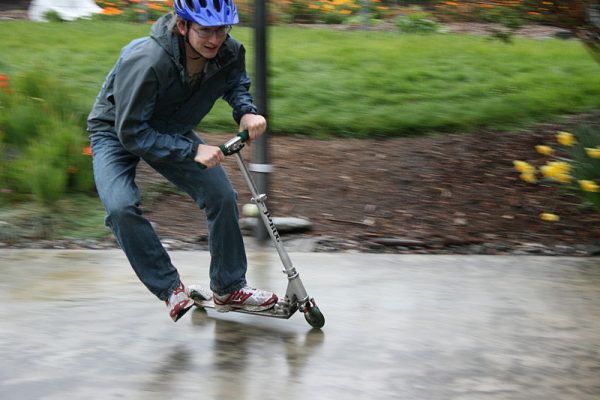Embracing a sense of freedom and independence, scooters have become a popular mode of transport and recreation for people of all ages. However, for individuals with disabilities, the joy of riding can go beyond mere enjoyment—it represents a powerful means of empowerment, mobility, and inclusion. As we strive to make the world more accessible and inclusive for everyone, ensuring the security and well-being of those with unique abilities becomes paramount.

delves into the essential guidelines and considerations to make the riding experience a delightful and secure adventure for individuals with diverse abilities. From choosing the right scooter to creating a safe riding environment, this article offers practical insights that promote independence and confidence while minimizing risks.
Join us as we explore the world of scooter security for individuals with special needs, aiming to unlock the joys of mobility while fostering a culture of understanding and inclusion for all. Let’s embark on this journey together, where fun and security coexist harmoniously for every rider, regardless of their unique abilities.
Key Takeaways
- Prioritize security and inclusivity in scootering for individuals with disabilities.
- Empower and develop skills while adapting to unique abilities and challenges.
- Provide physical, therapeutic, and cognitive benefits through tailored activities.
- Foster social interaction, independence, and a higher quality of life.
- Break down barriers and promote inclusiveness in a diverse society.
Understanding The Needs Of Individuals With Special Needs
Understanding the needs of individuals with disabilities in scootering is of paramount importance for several reasons:

- Safety: Individuals with disabilities may have unique physical, cognitive, or sensory challenges that affect their ability to operate a scooter securely. Understanding their specific needs helps tailor their riding experience to minimize risks and prevent accidents.
- Inclusivity: Everyone deserves the opportunity to participate in recreational activities, including scootering. By understanding their needs, you can create an inclusive environment that allows individuals with disabilities to enjoy the same activities as their peers.
- Empowerment: Engaging in scootering can boost self-confidence and a sense of accomplishment for individuals with disabilities. By understanding their needs, you can provide the necessary support and adaptations that allow them to participate and succeed.
- Skill Development: Scootering can contribute to motor skill development, balance, coordination, and spatial awareness. By understanding an individual’s needs, you can design appropriate exercises and challenges to help them develop these skills.
- Physical Fitness: Scootering offers cardiovascular benefits and helps improve muscle strength and endurance. Tailoring the riding experience to an individual’s needs ensures that they can engage in physical activity at a level that is safe and beneficial for their unique abilities.

source: commons.wikimedia.org - Social Interaction: Participating in group scootering activities can foster social connections and a sense of belonging. Understanding an individual’s needs helps create an environment that encourages positive interactions and friendships.
- Cognitive Engagement: Scootering requires decision-making, spatial awareness, and problem-solving. By adapting scootering activities to an individual’s cognitive abilities, you can provide cognitive engagement and stimulation.
- Therapeutic Benefits: For many individuals with disabilities, riding can have therapeutic benefits, such as improving muscle tone, enhancing sensory integration, and boosting mood. Tailoring the scootering experience to their needs can optimize these benefits.
- Individualized Approach: Each person with disabilities is unique, with their own strengths and challenges. Understanding their needs allows you to provide an individualized approach that maximizes their potential for success and enjoyment.
- Quality of Life: Engaging in enjoyable activities like scootering contributes to an enhanced quality of life. By understanding an individual’s needs, you can provide them with opportunities to experience joy, fun, and a sense of accomplishment.
- Promoting Independence: Adapted scootering activities can promote independence by allowing individuals with disabilities to engage in activities that they might otherwise struggle with. This empowerment contributes to their overall well-being.
- Reducing Barriers: Understanding the needs of individuals with disabilities breaks down barriers and misconceptions. It promotes a more inclusive and accepting society that values diversity and embraces everyone’s right to participate in recreational activities.
In essence, understanding the needs of individuals with disabilities in scootering is not just about security; it’s about creating a positive, enriching, and inclusive experience that respects their unique abilities and enhances their overall well-being.
How To Ensure A Fun And Safe Ride For Individuals With Special Needs?
Ensuring a fun and safe ride for individuals with disabilities requires careful planning, attention to detail, and a commitment to inclusivity. Here are some essential tips to achieve this goal:

Individualized Assessment
Start by conducting individualized assessments of each person’s abilities, limitations, and needs. Especially for children, it is paramount to ensure safety by considering physical, cognitive, and sensory factors to tailor the riding experience accordingly. Making sure they wear appropriate equipment can minimize the risk of injury.
Proper Equipment And Gear
Choose appropriate adaptive equipment and security gear for scooter safety, such as specially designed helmets to prevent head injuries, knee pads, elbow pads, and wrist guards. It’s vital to wear protective gear and ensure that all gear fits well and provides adequate protection.
Supervision And Training
Provide proper training and supervision, especially during child rides on scooter boards, based on the individual’s capabilities. Helmet safety is paramount, and beginners or those with limited mobility may need more support and guidance during their rides. The use of knee and elbow pads can greatly reduce the risk of injuries from scooter related accidents.
Accessible Riding Areas
Select riding areas that are accessible and safe for individuals with disabilities. Smooth surfaces, minimal obstacles, and pedestrian-friendly spaces are ideal.
Adjust Speed And Difficulty
Adapt the speed and difficulty level of the ride to match the individual’s abilities. Gradually increase the challenge as their skills improve.
Incorporate Social Interaction
Encourage group rides and social interactions to foster a sense of community and support among riders with disabilities.
Sensory Considerations
Be mindful of sensory sensitivities and adjust the environment accordingly. Reduce noise, bright lights, or overwhelming stimuli that may cause discomfort.
Communication And Consent
Establish clear communication channels to understand the rider’s preferences and comfort levels. Always seek their consent before any ride or activity.
Monitor For Fatigue
Keep an eye on signs of fatigue or discomfort during the ride. Offer breaks and rest as needed to prevent overexertion.
Promote Confidence And Independence
Celebrate achievements and progress to boost the rider’s confidence and promote independence in their riding experience.
Educate And Raise Awareness
Educate fellow riders and the community about the importance of inclusion and security for individuals with disabilities. Create awareness to foster a supportive and understanding environment.
Collaborate With Support Networks
Work with caregivers, therapists, or support networks to gain insights into the individual’s specific needs and to coordinate efforts for a safe and enjoyable riding experience.
Regular Reviews And Improvements
Continuously assess and review the riding program to identify areas for improvement and make necessary adjustments to enhance security and fun.
Above all, treat individuals with disabilities with respect, dignity, and kindness. By creating an inclusive and supportive environment, you can ensure that everyone, regardless of their abilities, can experience the joy of a fun and safe ride.
Conclusion
In conclusion, recognizing and understanding the needs of individuals with disabilities in the context of scootering is a pivotal step towards fostering inclusivity, security, empowerment, and overall well-being. By tailoring riding experiences to accommodate their unique abilities, challenges, and preferences, we create an environment where everyone can participate and thrive. This understanding not only ensures the security of individuals with disabilities but also promotes their physical, cognitive, social, and emotional development. It contributes to a more inclusive and compassionate society, where everyone has the opportunity to enjoy the benefits of recreational activities, regardless of their individual differences. As we continue to prioritize understanding and adapting to these needs, we move towards a more accessible and enriching world for all individuals, regardless of their abilities.

